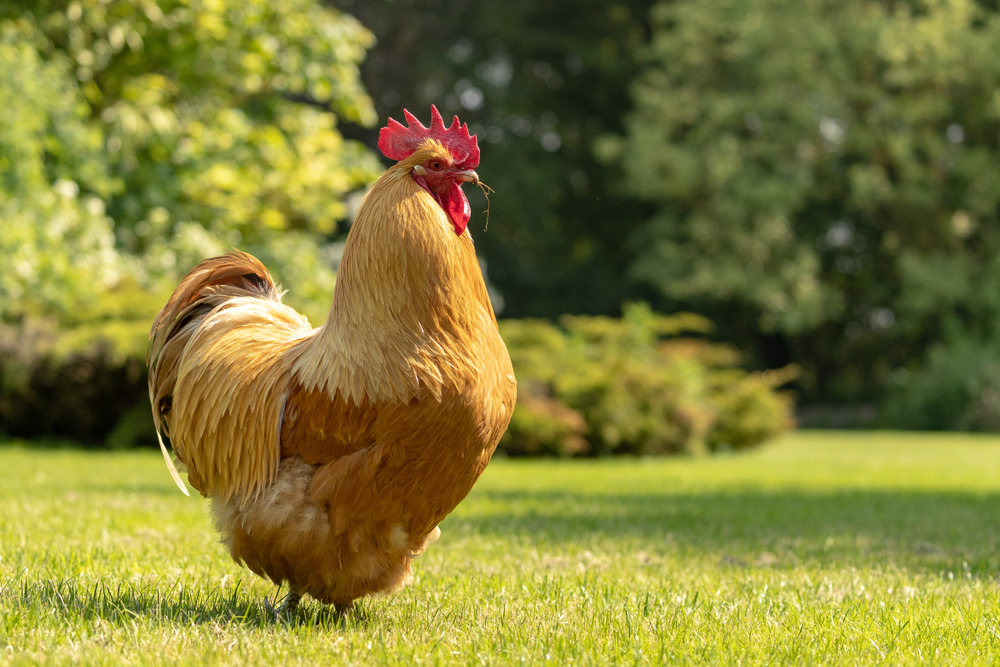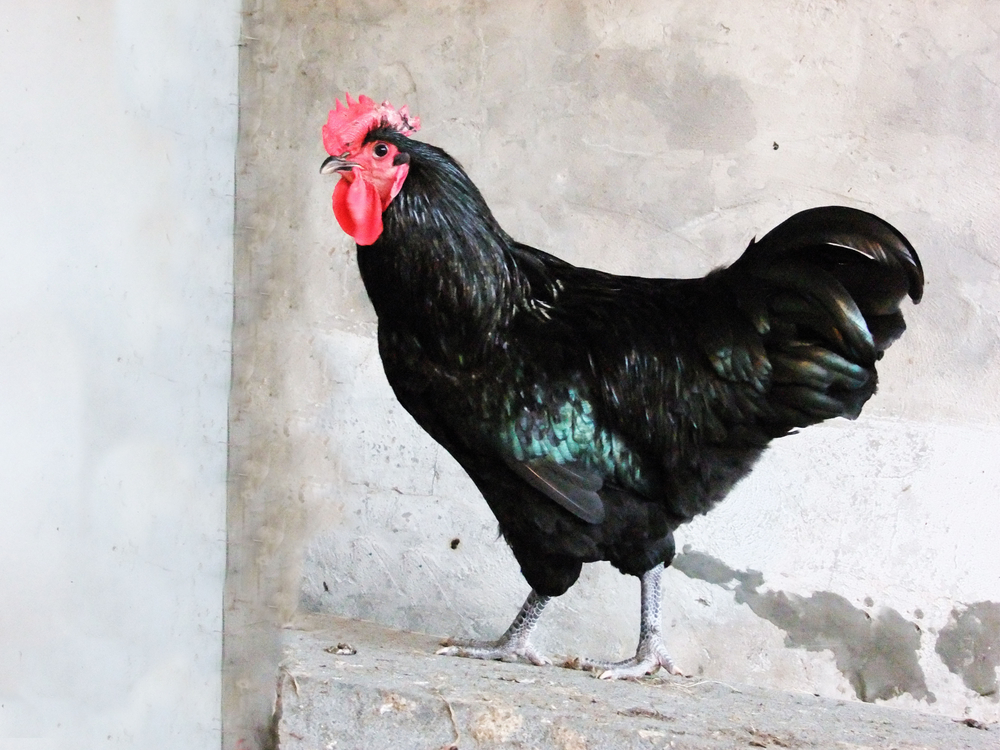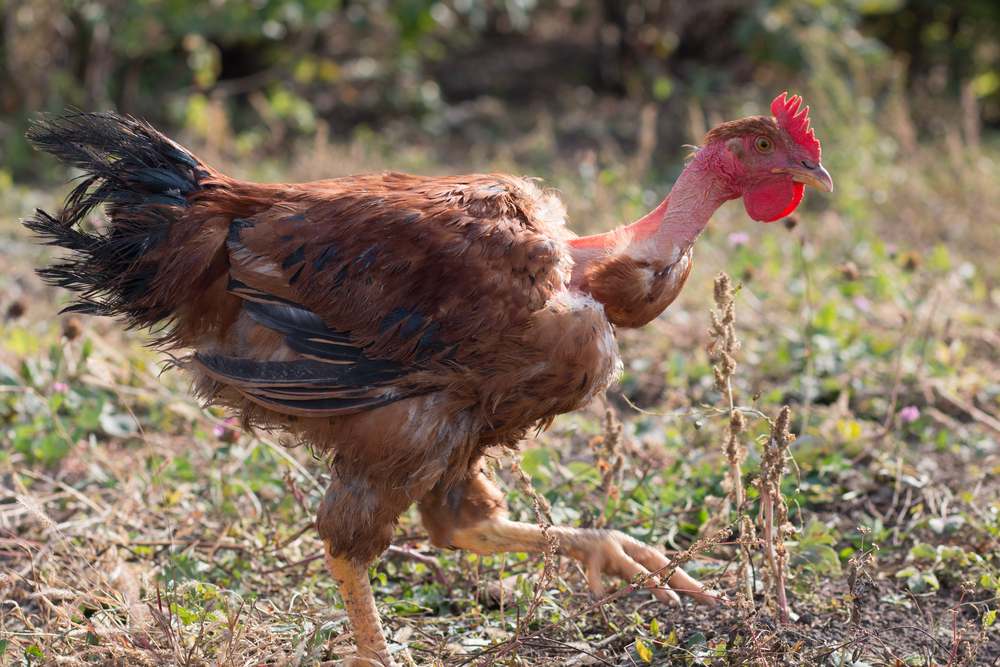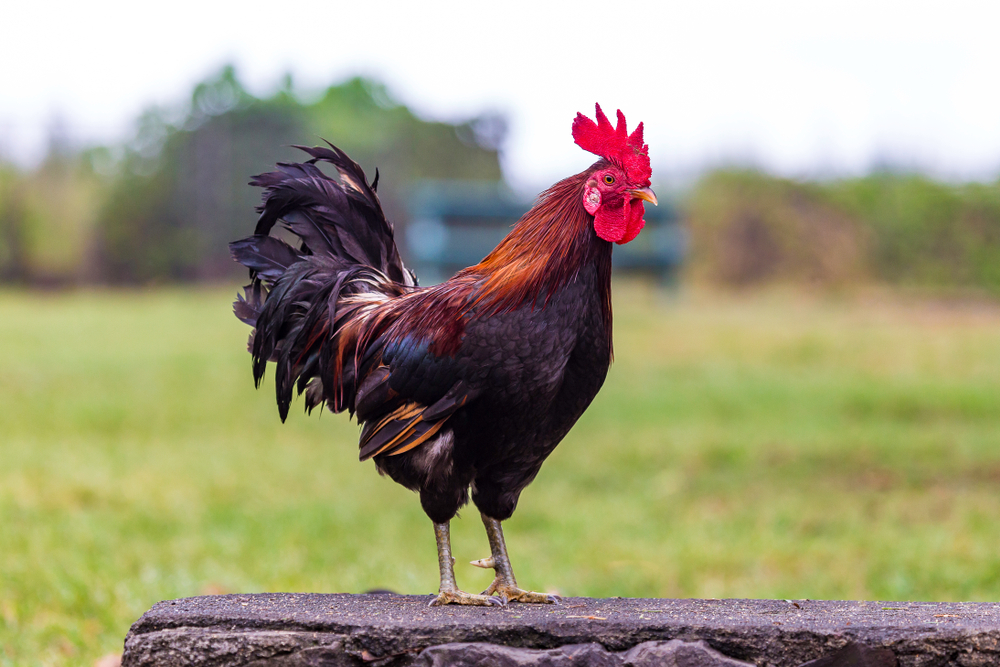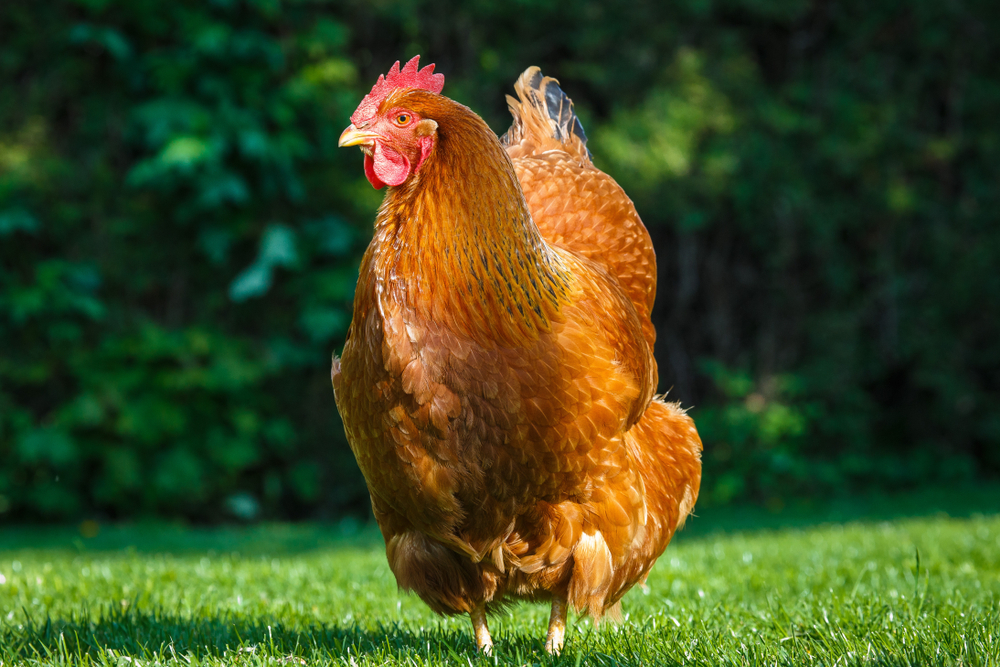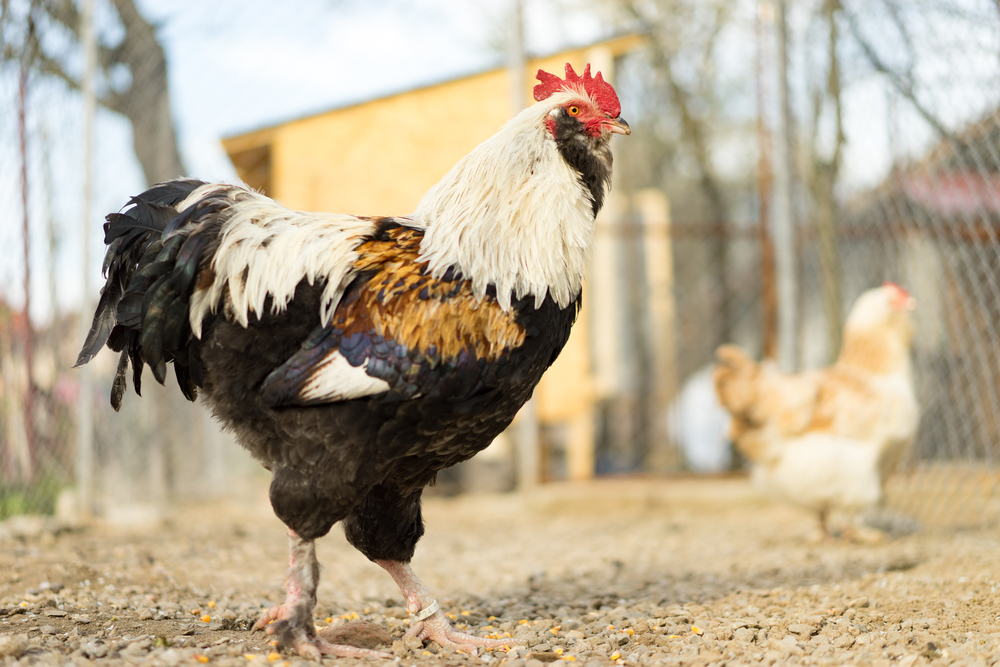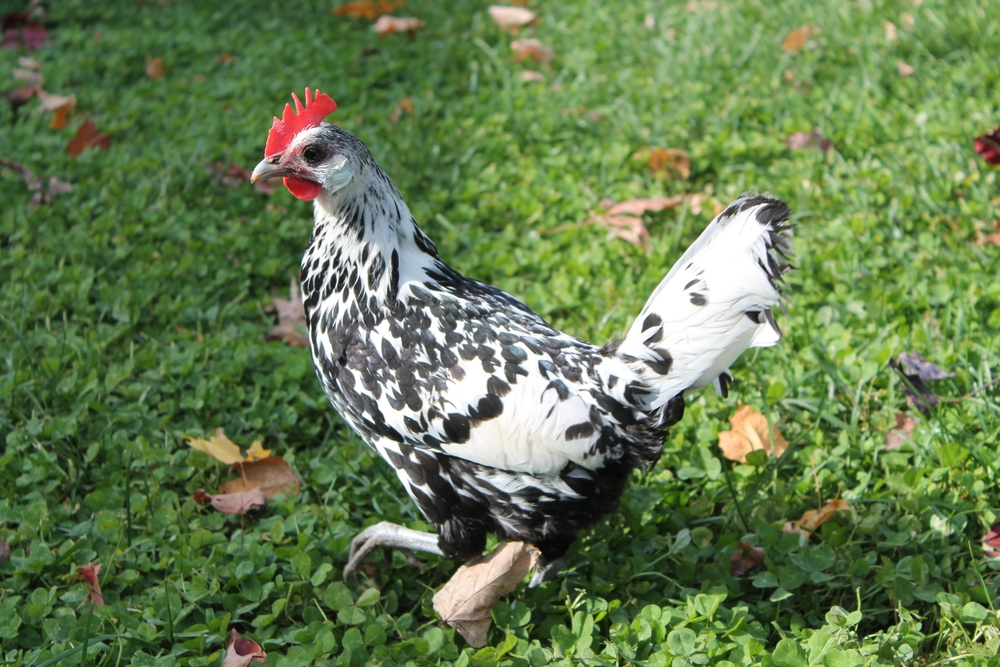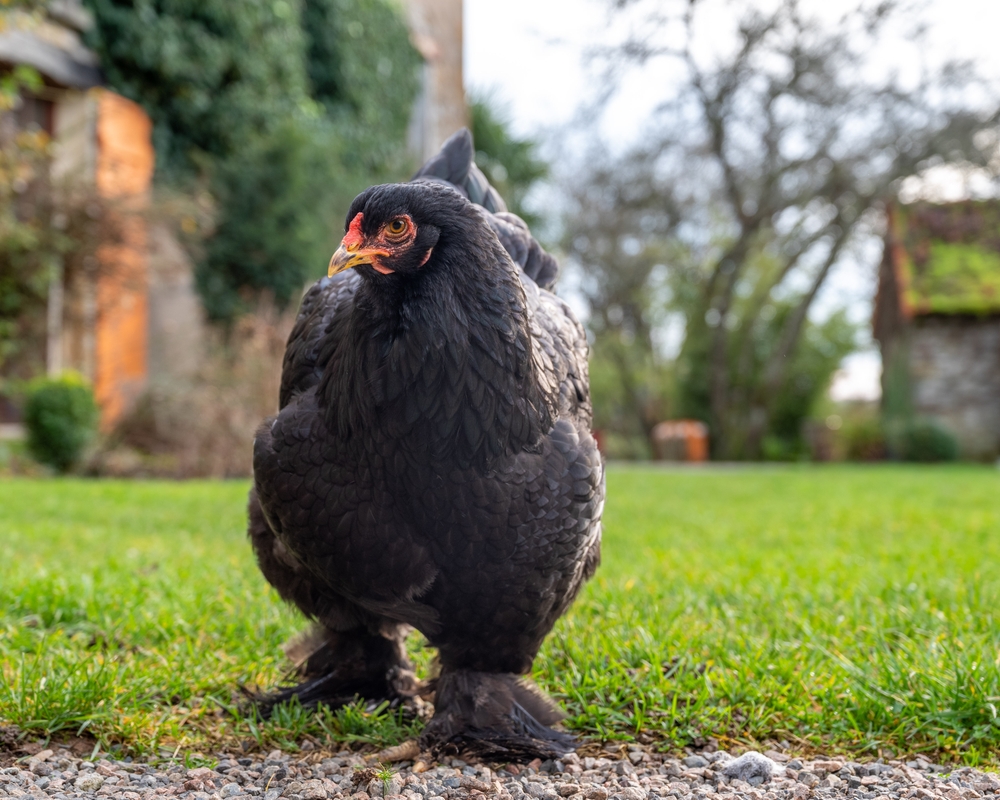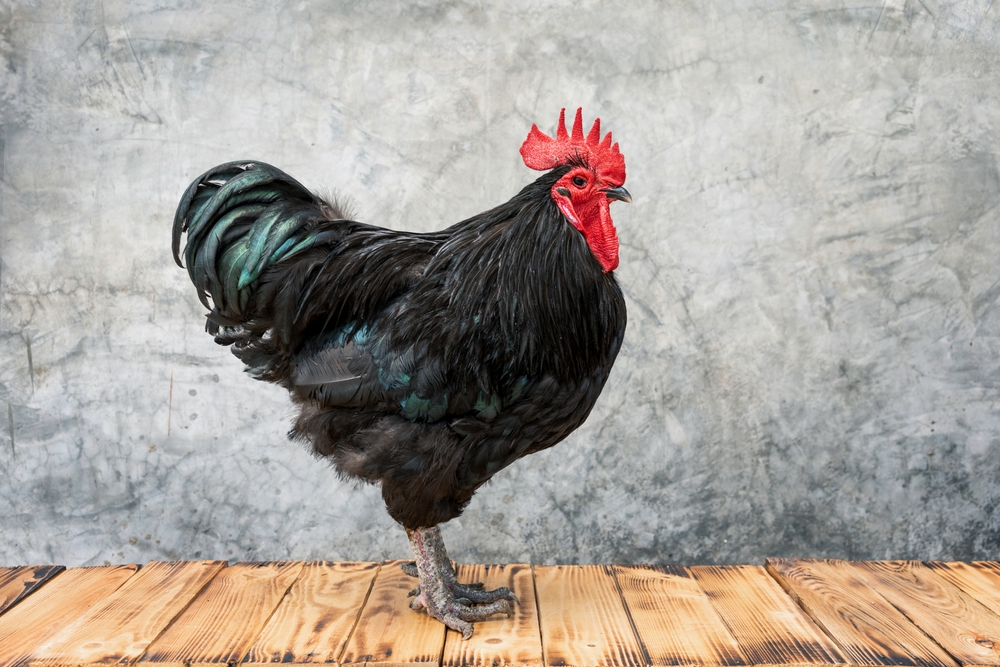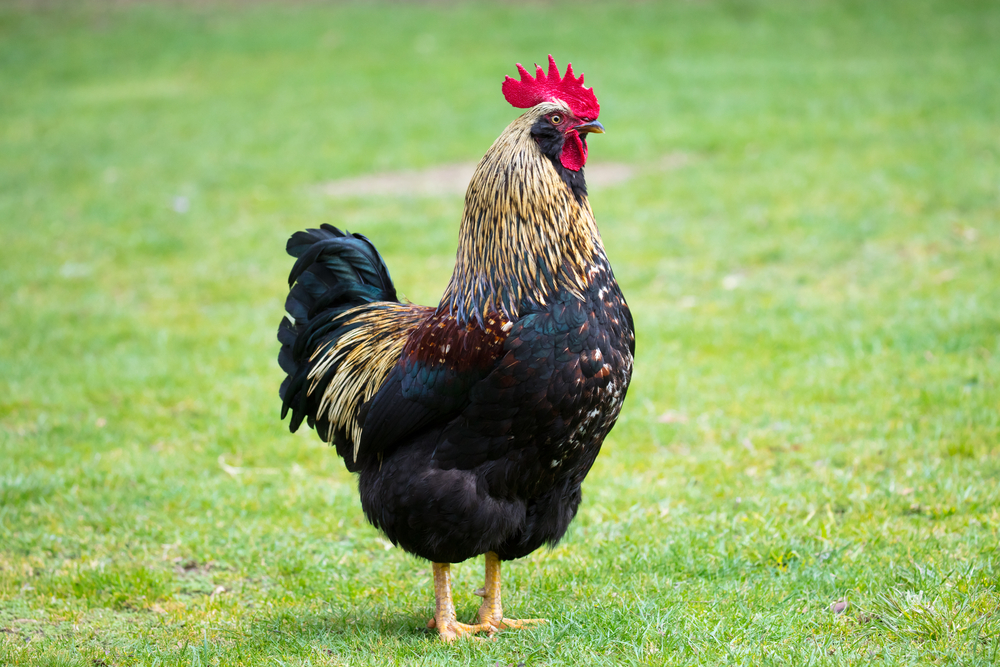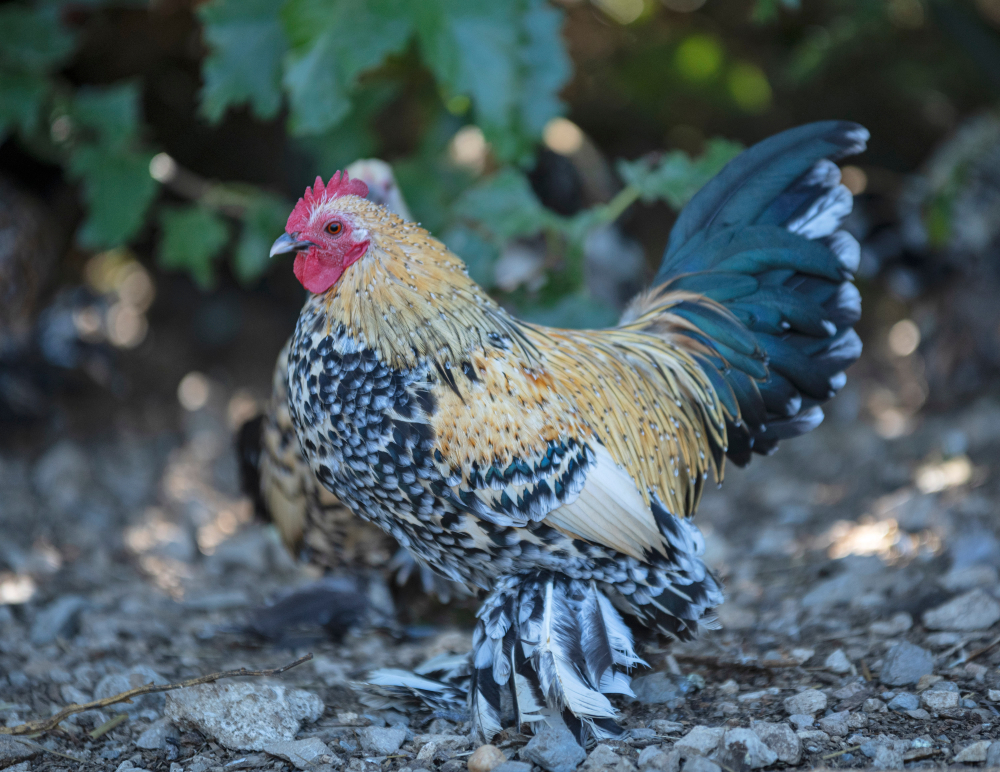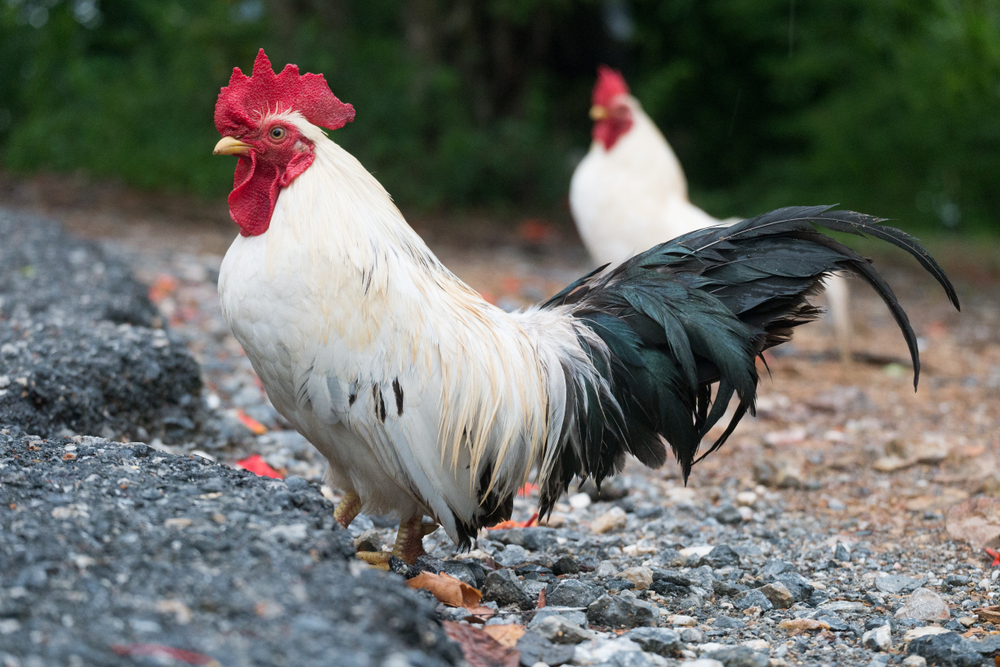About
The Orpington cockerel is the young male of the Orpington breed, a large, soft-feathered chicken developed in Orpington, Kent, England in the late 19th century by William Cook. Originally bred for dual-purpose utility, Orpingtons quickly gained popularity for their beauty, calm temperament, and productivity.
Orpington cockerels are broad, deep-bodied birds with a rounded shape and loose, fluffy plumage that gives them an even larger appearance. They come in several recognized colors, including black, buff, blue, and white, with buff being especially popular. The feathers are soft and dense, helping provide insulation in cold climates.
A cockerel (under one year old) typically weighs 3.4–4.1 kg (7.5–9 lbs), with mature roosters reaching even heavier weights. They have a single upright comb, red wattles, and gentle expressions. Despite their size, Orpington cockerels are generally docile and friendly, making them easy to handle compared to more aggressive breeds.
While they are capable of free-ranging, Orpingtons tolerate confinement well and are known for being good winter layers when mature hens. As males, cockerels do not lay eggs, but they play an important role in flock protection and breeding programs, passing on the Orpington’s desirable traits of calmness, size, and productivity.
They are also valued for meat production, with a full-bodied carcass and flavorful flesh. Their slower growth compared to commercial hybrids is offset by their quality as a heritage breed.
The Orpington’s scientific classification is Gallus gallus domesticus, and it belongs to the family Phasianidae.
Physical Characteristics
Plumage:
Orpington cockerels are known for their soft, loose, and profuse feathering, which gives them a full, rounded appearance. Recognized color varieties include Buff (most famous), Black, Blue, and White, with other rarer shades bred by enthusiasts. The feathers lie loosely against the body, enhancing their size and making them appear even heavier than they are.
Head and Comb:
The head is medium-sized and broad, topped with a single, upright comb of 5 well-defined points. The comb, wattles, and earlobes are bright red, contrasting with the beak, which is short, strong, and color-matched to the variety (horn, black, or pinkish-white). Eyes are large and reddish-bay.
Body:
The body is broad, deep, and well-rounded, with a full breast and short back. Orpington cockerels have a curving contour from neck to tail, creating a blocky, yet elegant, silhouette. The abundant feathering covers the body evenly, giving them a soft and “fluffy” outline.
Legs and Feet:
The legs are sturdy, clean (feather-free), and set well apart to support their heavy build. Shank color varies with plumage variety (white/pink in Buff, black in Black, slate in Blue). Feet have four strong toes, with pinkish-white soles.
Tail:
The tail is short and carried at a slight upward angle, blending smoothly into the body because of the thick feathering. The sickle feathers are broad, not overly long, and often partially concealed by the saddle feathers.
Size:
-
Cockerel Weight: 8 to 10 lbs (3.6 to 4.5 kg) – slightly lighter than a full-grown rooster but still large and solid for his age.
Sexual Dimorphism:
Cockerels are distinguished from pullets by their larger size, more prominent comb and wattles, pointed hackle and saddle feathers, and the development of sickle feathers in the tail. Their plumage is often glossier than that of hens, especially in darker color varieties.
The Orpington cockerel’s combination of abundant feathering, substantial body, and calm bearing makes it one of the most impressive and visually appealing young roosters among heritage chicken breeds.
Reproduction
Mating Behavior:
Orpington cockerels are generally calm and gentle compared to many other rooster breeds, which makes them well-suited for mixed or backyard flocks. Courtship typically involves tidbitting—calling hens to food—and slow, deliberate approaches rather than aggressive chasing. Their large size and heavy build may require a slightly lower hen-to-rooster ratio, with 1 cockerel for every 8–10 hens recommended for good fertility.
Breeding Season:
Capable of breeding year-round in mild climates, Orpington cockerels are most active in spring and summer when hens are in peak laying condition. They maintain fertility well into the cooler months due to their cold-hardy nature.
Fertility and Development:
-
Maturity: Orpington cockerels reach sexual maturity around 5.5 to 6 months, though full body growth and feather development continue for several more months.
-
Fertility Rate: Generally high when managed with an appropriate number of hens and adequate space for movement.
Hens’ Egg Production (When Paired with a Cockerel):
-
Annual Output: Hens paired with Orpington cockerels can produce 180–220 large eggs per year.
-
Egg Color: Light brown.
-
Egg Size: Large.
Broodiness and Incubation (Hens):
-
Orpington hens are frequently broody, making them reliable natural incubators.
-
Incubation Period: About 21 days, with strong maternal instincts after hatching.
Chicks:
-
Appearance at Hatch: Fluffy, with coloration matching the variety (Buff chicks are pale yellow, Black chicks are dark with lighter underbellies, Blue chicks are grayish).
-
Self-Sufficiency: Active within hours, beginning to peck and forage soon after hatching.
-
Growth Rate: Moderate; chicks develop abundant feathering early, giving them extra insulation.
The Orpington cockerel’s calm demeanor, steady fertility, and compatibility with broody hens make him an excellent sire for both production and exhibition breeding programs.
Lifespan
Lifespan in the Farm/Backyard Setting:
Orpington cockerels typically live 5 to 7 years under standard care, though some may live longer in low-stress environments where they are not exposed to frequent competition or aggression. Peak breeding performance is usually between 1 and 4 years of age.
Lifespan in Optimal Conditions:
With excellent nutrition, secure housing, low predator risk, and regular health checks, Orpington cockerels can live longer than average for large roosters.
-
Average Maximum Lifespan: 8 to 10 years
-
Exceptional cases: 10–12 years, especially in settings where they are kept for companionship or show rather than intensive breeding.
Threats to Longevity:
-
Predation: Due to their large size and slower movement, they can be vulnerable to foxes, hawks, raccoons, and dogs when free-ranging.
-
Leg and Joint Strain: Their heavy build can lead to joint wear, arthritis, or bumblefoot, particularly on hard or uneven ground.
-
Parasites and Disease: Susceptible to lice, mites, worms, and respiratory conditions if housed in damp, poorly ventilated coops.
-
Heat Stress: Thick plumage makes them prone to overheating in hot climates without shade or cool water.
Adaptations for Longevity:
Orpington cockerels are cold-hardy and calm by nature, reducing stress-related health issues. Their docile temperament also minimizes injury risk from aggressive behavior in mixed flocks.
Eating Habits
Diet:
Orpington cockerels are omnivorous and thrive on a balanced combination of commercial poultry feed and natural foraging.
-
Primary Feed: Grower or maintenance pellets with 15–17% protein for non-breeding roosters, and higher-protein breeder feed during the mating season.
-
Foraged Foods: Insects, worms, seeds, tender grasses, and weeds found while roaming.
-
Treats and Supplements: Whole grains (wheat, oats, corn), leafy greens, vegetable scraps, grit for digestion, and oyster shell or crushed limestone if housed with laying hens.
Feeding Behavior:
-
Orpington cockerels are calm, steady eaters, often tidbitting to call hens to food sources.
-
Their heavier build means they require slightly more feed than lighter breeds, particularly during breeding season or in cold weather.
-
They drink frequently and need constant access to clean, fresh water.
Foraging Times:
-
Most active during morning and late afternoon, resting in shade during the heat of the day.
-
In cooler climates, they may forage consistently throughout daylight hours.
Adaptations for Feeding:
-
Strong, broad beaks for breaking seeds and digging out insects.
-
Calm temperament means they rarely engage in aggressive competition at the feeder, but in mixed flocks, ensure they get adequate access to feed.
Captive Diet Management:
-
Maintain a balanced diet to prevent obesity, as excess weight can shorten lifespan and impair mobility.
-
Supplement with extra protein during feather molt or heavy breeding activity.
The Orpington cockerel’s calm feeding style, balanced diet needs, and willingness to forage make him a low-maintenance yet productive addition to a heritage flock.
Uniqueness
Abundant, Soft Feathering:
One of the Orpington cockerel’s most distinctive features is his loose, fluffy plumage, which gives him a larger-than-life, rounded appearance. This feathering provides excellent insulation in cold climates and adds to his ornamental appeal.
Gentle Giant Temperament:
Despite their large size, Orpington cockerels are calm, friendly, and non-aggressive compared to many rooster breeds. Their steady nature makes them well-suited for family flocks and mixed-breed groups.
Dual-Purpose Heritage:
Originally bred in England in the late 1800s, Orpingtons were designed to be excellent table birds while also providing a good supply of large brown eggs. The cockerel’s role as a sire supports this heritage dual-purpose function.
Cold-Hardy Design:
Their dense feathering and sturdy frame make them especially well-adapted to cooler climates, where they can remain active and healthy in winter with minimal heat support.
Variety of Color Options:
The Orpington cockerel comes in multiple recognized varieties—Buff, Black, Blue, and White—each offering show-quality appeal for poultry exhibitions.
Show and Exhibition Presence:
Their combination of impressive size, calm stance, and flowing feather lines makes Orpington cockerels highly competitive in poultry shows, particularly when feather condition is well maintained.
The Orpington cockerel’s blend of elegance, utility, and gentle nature makes him one of the most admired heritage roosters for both production and ornamental purposes.



































































